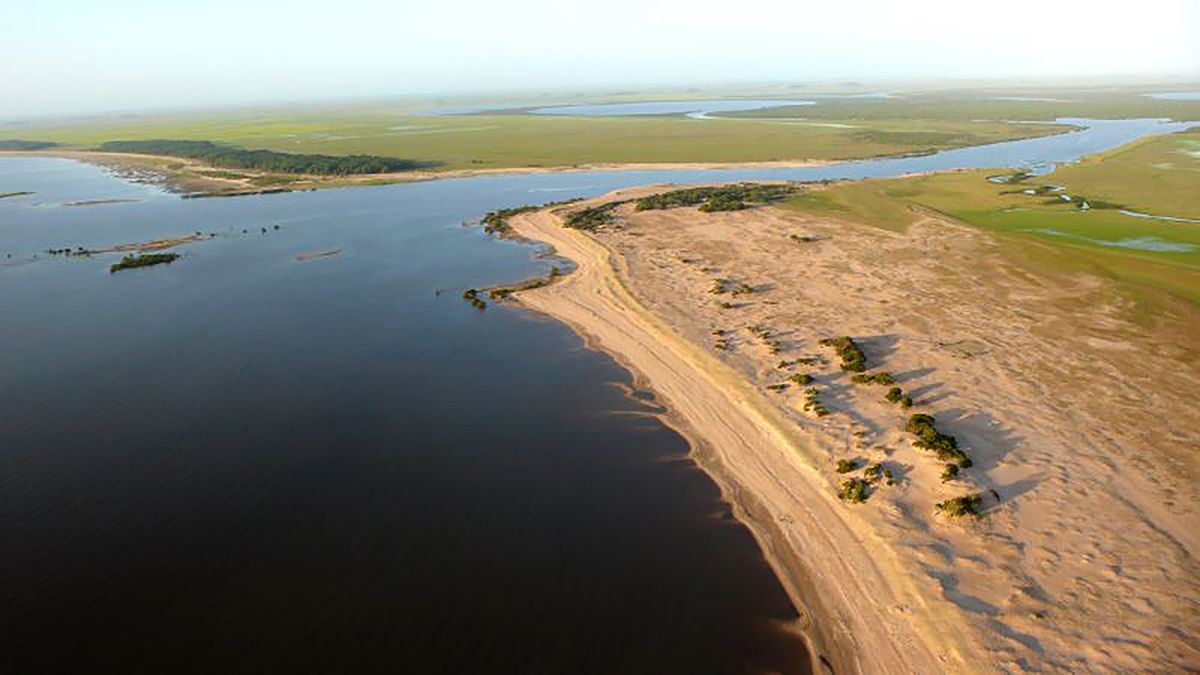Following the announcement of the agreement reached between Uruguay and Brazil for dredging of the Laguna Merín WaterwayThese are the keys to the project, which has great potential to become a center of economic development for the entire eastern region of the country, mainly in the departments of long hill, rock and Thirty-three.
The waterway would facilitate the interconnection of watercourses from Rio Grande do Sulin Brazil, and the aforementioned Uruguayan departments, together with maldonado and Lavalleja, according to a report by the Center for the Study of Economic and Social Reality (Ceres) published in 2019.
The integral development of a zone of terrestrial influence around the Merín Lagoon would have a direct impact on the activity and industrial production of the region between both countries.
The lagoon basin, together with its tributaries, represent approximately one sixth of the countrywith 33,000 square kilometersand cover an area of 62,250 square kilometers in the binational total. In addition, if it adds to the Brazilian Lagoa dos Ducksthe lake ecosystem amounts to 143,000 square kilometers, in a territory inhabited by some 4.5 million people.
report ceres.jpg
CERES
Between the benefits of the realization of this waterway, highlight the increase in competitiveness for access to new markets and a possible reduction of transportation costs following a new logistics improvement that favors national decentralization.
The main fluvial exit routes for national assets would be to the south and west of the basin, and would impact, among others, rice production of the area, which is currently obliged to transport production by road to the port of Montevideosomething that negatively impacts the final sale price and the competitiveness of the sector.
In turn, there could be a increase in employment and production in one of the regions with the greatest socioeconomic deprivations in the country. At the same time, a improvement in environmental impact due to reduced use of fossil fuels.
In the surroundings of the basin there are 1 million underutilized hectares
Of the natural resources available around the basin, about 1 million hectares that are underutilized, as well as one of the largest regional reserves of calcareous rock, within an area rich in minerals. Likewise, the opportunity would be opened for the shipment of cellulose, and investments related to the forestry sector.
In the future, those who seek to invest in the area must take into account the legal framework, without losing sight of the preservation of the fauna and flora of the place, to avoid direct irreversible damage in relation to soil fertility, forests and water resources of both nations.
According to the Ceres report, for the completion of the waterway projects, a strategic plan for attracting investment, as well as a homogenization of the mechanisms of binational controlseeking to generate a active border that encourages investors.
Likewise, the entity stated that there should be at least one infrastructure lake terminal basic that allows to project an expansion in a progressive way, after the dredging. Also, define a plan of incentives to promote the arrival of capital and the development of industrial parks.
Source: Ambito




